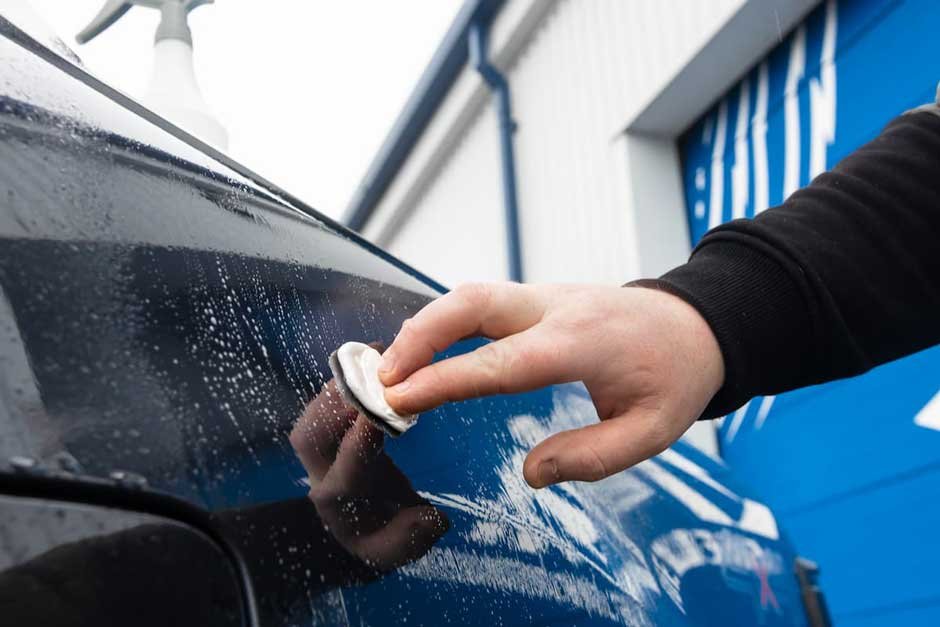A clay bar is a game-changer in the world of car care, offering a unique solution to remove stubborn contaminants from your vehicle’s paintwork. This simple yet effective tool has the power to restore and protect your car’s exterior, giving it a smooth, glossy finish that turns heads. Many car enthusiasts and professionals swear by clay bar treatment as an essential step in their detailing routine.
Using a clay bar has a significant impact on your car’s appearance and longevity. This article will explore what a clay bar is, how it works to remove impurities, and the benefits it brings to your vehicle’s paint protection. We’ll also discuss when and how often to use a clay bar, helping you keep your car looking its best. By the end, you’ll understand why this technique is crucial for maintaining your car‘s pristine condition.
What is a Clay Bar?
A clay bar is an engineered elastic clay compound used in automotive detailing to remove contaminants from a vehicle’s surface. Made from synthetic polymer or ultra-fine natural Kaolin clay, it effectively eliminates particles that regular washing cannot, such as brake dust, metal dust, industrial pollution, and road grit. These minuscule particles bond to the car’s surface over time, creating a bumpy texture that can be felt after washing. Clay bars are essential for mechanical decontamination, especially before machine polishing or ceramic coating. They can be used on various surfaces, including paintwork, glass, wheels, and even gloss-finish plastics, making them a versatile tool in the detailing process.
How Clay Bars Work
Clay bars work by mechanically removing contaminants from a vehicle’s surface. As a car owner glides the clay bar over the paintwork, it shears off stuck particles of dirt, road tar, brake dust, and other pollutants that have become embedded in the clear coat. The slightly abrasive nature of the clay allows it to pull out these impurities, leaving the surface smooth and clean.
To use a clay bar effectively, a lubricant is essential. This can be a dedicated clay lubricant, a quick detailer spray, or even a mixture of water and car shampoo. The lubricant helps the clay glide smoothly over the surface, reducing friction and preventing scratches. It’s crucial never to use a clay bar without lubrication, as this can cause damage to the paint.
Benefits of Clay Bar Treatment
Clay bar treatment offers numerous advantages for car owners. It enhances the overall appearance of the paint, making it smoother and more vibrant. By removing contaminants, the treatment allows wax and sealants to bond more effectively, resulting in longer-lasting protection. This process also acts as a preventive measure, safeguarding the paint from premature ageing and environmental damage. The clay bar’s ability to eliminate embedded particles creates a surgically clean surface, ideal for applying ceramic coatings or sealants. Regular clay bar treatments keep the paint in top condition, reducing the risk of long-term damage and making future cleanings easier. Ultimately, this simple yet effective technique helps maintain a car’s pristine condition, ensuring it looks as good as new for years to come.
When and How Often to Use a Clay Bar
Car owners should use a clay bar treatment at least twice a year. However, the frequency may vary depending on driving conditions and environment. Vehicles exposed to heavy pollution, industrial areas, or frequently driven on highways may require more frequent treatments. To determine if a clay bar is needed, one can perform a simple test. After washing and drying the car, place a hand in a plastic bag and gently slide it across the surface. If small bumps are felt, it’s time for a clay bar treatment. The hood, roof, and trunk are areas that often show the most need for claying. It’s important to note that a clay bar is an aggressive technique and should only be used when necessary, as it can create micro-scratches that require polishing to remove.
Conclusion
Clay bar treatment has a significant impact on maintaining a car’s pristine appearance and protecting its paintwork. This simple yet effective technique removes stubborn contaminants that regular washing can’t eliminate, resulting in a smoother, glossier finish. By using a clay bar regularly, car owners can enhance the longevity of their vehicle’s paint, make waxing and sealing more effective, and keep their car looking its best for years to come.
To sum up, understanding when and how to use a clay bar is crucial to get the most out of this detailing process. While twice-yearly treatments are generally recommended, the frequency may vary based on driving conditions and environment. By incorporating clay bar treatments into their car care routine, owners can ensure their vehicles maintain a showroom-quality appearance and protect their investment in the long run.

